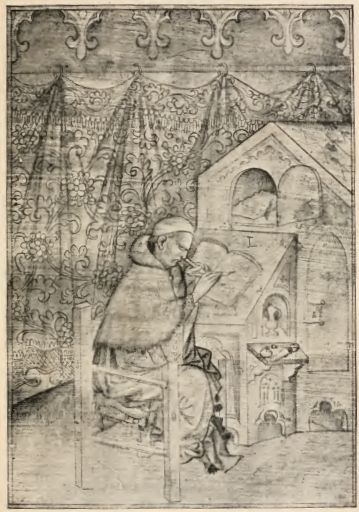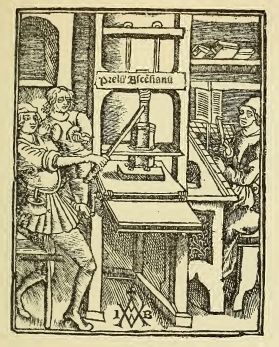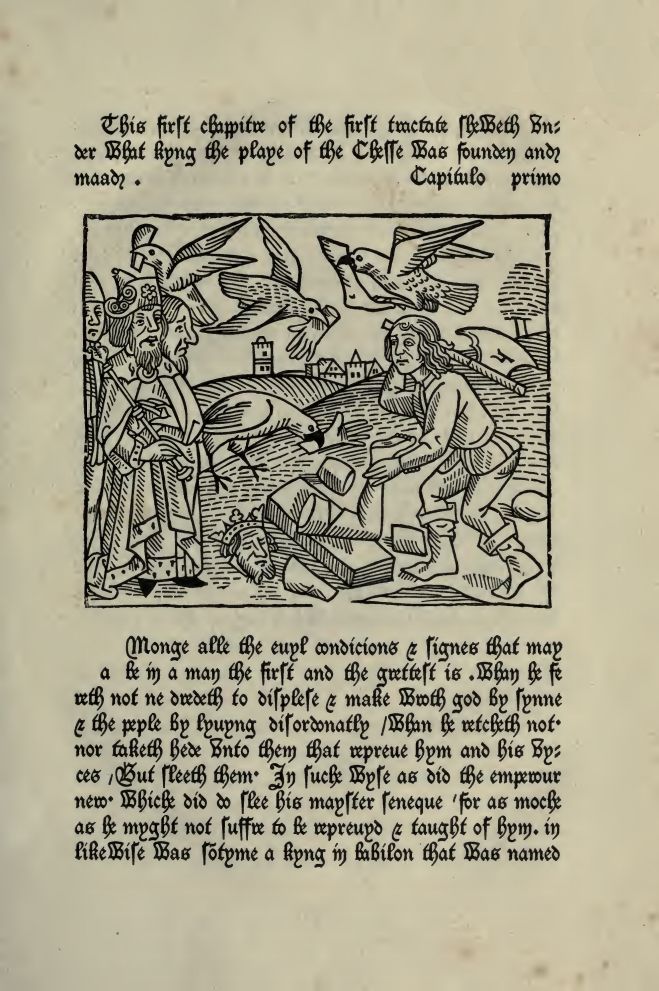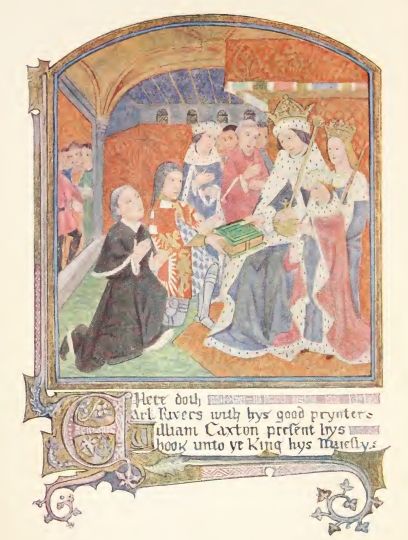nn
n
n On the first of March 1468, an English merchant fromnKent who held the position of the Governor of the English in Bruges was orderednby Margaret, Duchess of Burgundy, who was the third wife of Duke Charles thenBold, and the sister of two English Kings (Edward IV and Richard III), to beginna translation of The Recuyell of the Historyes of Troye from French intonEnglish.
n
n
n
 |
| The English House, Bruges |
n
n
n
nWhen the translation was completed and had been officially presentednto Margaret on September 19th 1471, it became an immediate andnpopular success in the Burgundian court and, as was the common practise at thentime, scribes were employed to produce expensive hand-written copies of thenbook.
n
n
n
 |
| A Scribe copying a book |
n
n
n
nThe translator was unhappy with the expense and the time taken in makingnthe copies and looked to a newly developing technology to speed up thenproduction of his work. There was a great fashion for card-playing in Europe atnthe time and some enterprising Germans sought to speed up the making of cardsnby ‘emprinting’ them onto pasteboard from wooden blocks. They also madendevotional pictures for the decoration of missals and devotional books usingnthe same wooden blocks and it was only a short step to start including textninto the images.
n
n
n
 |
| Early Printing Press |
n
n
n
nThese block books were difficult to produce, as the text hadnto be cut into the wood in mirror-writing in order to be readable when printednonto paper and the great breakthough came when individual letters started to bencut instead and the words were built up step by step, one letter at a time, andnmost importantly, the same letters could be reused over and over again when thenpages were disassembled. There were naysayers, inevitably, who felt that thenuniformly sized letters lacked the grace and individuality of a scribe’s worknbut the invention took hold and the printing press became, arguably, thengreatest invention since that of the wheel.
n
n
n
nBack in Bruges, our Englishnmerchant was drawn to the new printing revolution as a solution to his dilemma,nand entered into partnership with a Flemish printer called Colard Mansion, and togethernthey produced the first printed book in the English language, The Recuyellnof the Historyes of Troye in 1473, and when this merchant returned home tonEngland, he brought the expertise and the knowledge of printing with him,nsetting up the first printing house in London in 1474. If you haven’t guessednby now, his name was, of course, William Caxton.
n
n
n
 |
| William Caxton – Chapter One – The Game of Chesse – 1474 |
n
n
n
nThe first book to be printednin England was Caxton’s translation of a moral work of about 1200 by Dacciesolencalled The Game of Chesse, although some believe he printed this book innBruges and brought it back with him. Other early works printed by him werenChaucer’s Canterbury Tales, Dictes and Sayengis of the Philosophresnby Earl Rivers and Mallory’s Le Morte d’ Arthur.
n
n
n
n
n
 |
| Earl Rivers presents Caxton to King Edward IV |
n
n
n
nThe early books, as maynbe expected in a foundling art, had not yet gained a standard form and they aren(and were) difficult to read with ease. The letter forms used were imitationsnof the hand written, black letter forms of the Gothic or German script, withnwhich we are unfamiliar these days and the reading of early books is not helpednby their lack of recognizable punctuation. Capital letters are not used fornproper names or at the start of sentences. A solidus ( / ) was used instead ofnthe comma. Spelling had not yet been standardised and the printer’s ownnidiosyncratic variations can make reading a text difficult, even when one isnfamiliar with the work in question. Caxton himself was well aware of this,
n
n
n
n“Inwas born and lerned myn englissh in Kente in the weeld where I doubte not isnspoken as brode and rude englissh as is in ony place of englond.”n
n
n
n
n
 |
| William Caxton |
n
n
n
nAbbreviated words were used so commonly that it was common for a key to them tonbe printed within the book. Spaces were frequently left in the text for thenlater addition of illuminated or decorated letters and illustration, which didnnot always happen.
n
n
n
 |
| Caxton’s Device |
n
n
n
nIn addition, the printers were frequently the binders ofntheir books, which they placed between heavy boards, making them unwieldy andndifficult to open. However, some printers’ practices were quick to make annappearance – consider this, an advertisement for his own premises produced bynCaxton in 1480,
n
n
n
n“If it plese ony man spirituel or temporel to bye ony pyes [pieces]nof two and thre comemoracios of salisburi vse enpryntid after the forme of thisnpreset lettre whiche ben wel and truly correct, late hym come to westmonesternin to the almonesrye at the reed pale and he shal haue them good chepe.”n
n
n
n
nnn
n
nnn



















